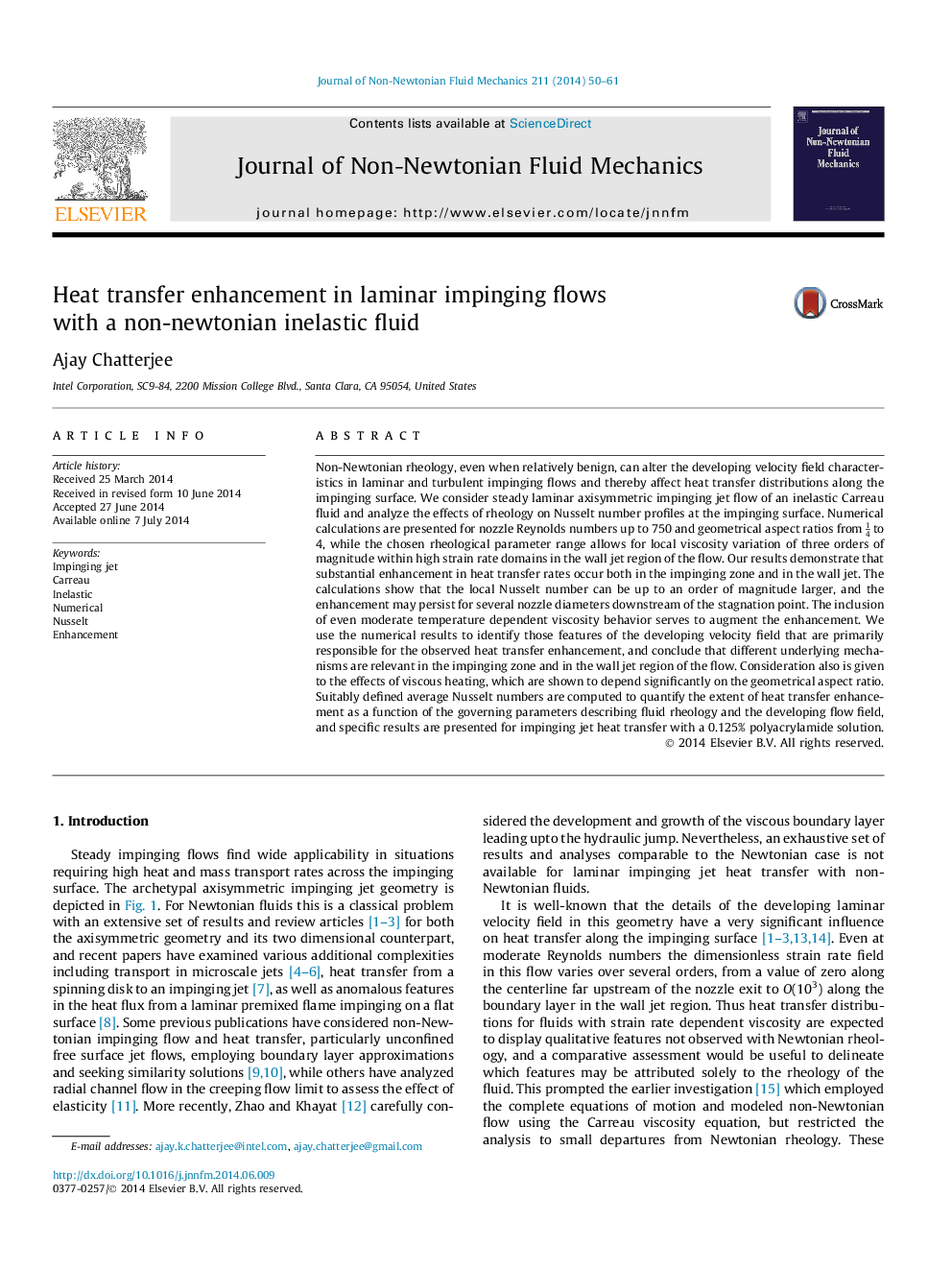| Article ID | Journal | Published Year | Pages | File Type |
|---|---|---|---|---|
| 670531 | Journal of Non-Newtonian Fluid Mechanics | 2014 | 12 Pages |
•Heat transfer rates are computed for laminar impinging flow of an inelastic fluid.•Nusselt number profiles are given in the impinging zone and in the wall jet region.•Heat transport enhancement is driven by different flow features in each region.•Effect of temperature dependent viscosity and viscous dissipation also is analyzed.•Specific results are presented for the impinging flow of a 0.125% PAA solution.
Non-Newtonian rheology, even when relatively benign, can alter the developing velocity field characteristics in laminar and turbulent impinging flows and thereby affect heat transfer distributions along the impinging surface. We consider steady laminar axisymmetric impinging jet flow of an inelastic Carreau fluid and analyze the effects of rheology on Nusselt number profiles at the impinging surface. Numerical calculations are presented for nozzle Reynolds numbers up to 750 and geometrical aspect ratios from 14 to 4, while the chosen rheological parameter range allows for local viscosity variation of three orders of magnitude within high strain rate domains in the wall jet region of the flow. Our results demonstrate that substantial enhancement in heat transfer rates occur both in the impinging zone and in the wall jet. The calculations show that the local Nusselt number can be up to an order of magnitude larger, and the enhancement may persist for several nozzle diameters downstream of the stagnation point. The inclusion of even moderate temperature dependent viscosity behavior serves to augment the enhancement. We use the numerical results to identify those features of the developing velocity field that are primarily responsible for the observed heat transfer enhancement, and conclude that different underlying mechanisms are relevant in the impinging zone and in the wall jet region of the flow. Consideration also is given to the effects of viscous heating, which are shown to depend significantly on the geometrical aspect ratio. Suitably defined average Nusselt numbers are computed to quantify the extent of heat transfer enhancement as a function of the governing parameters describing fluid rheology and the developing flow field, and specific results are presented for impinging jet heat transfer with a 0.125% polyacrylamide solution.
